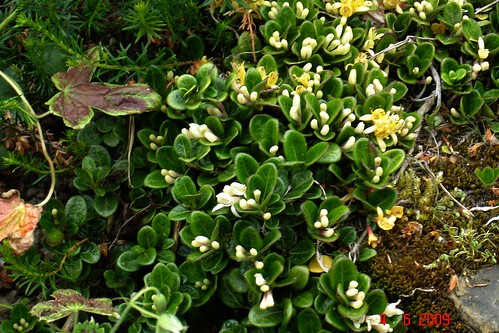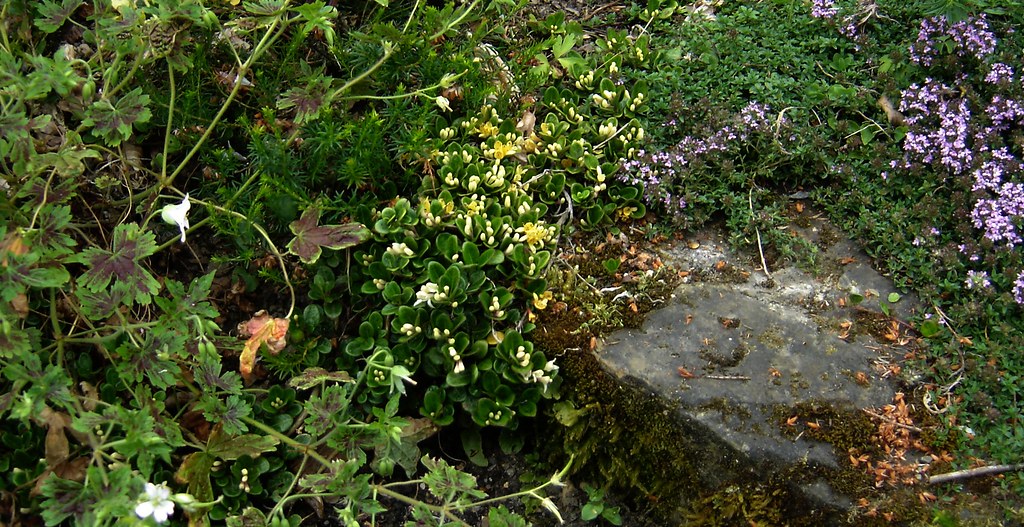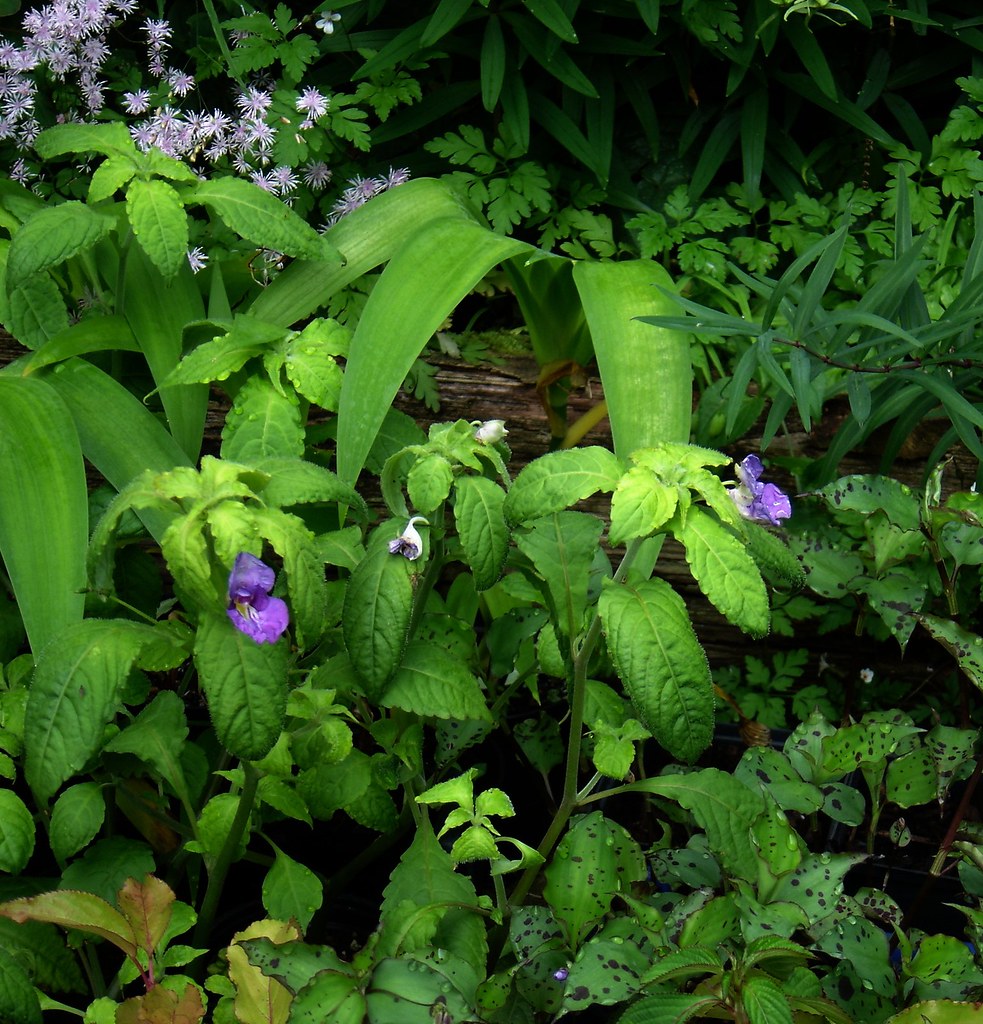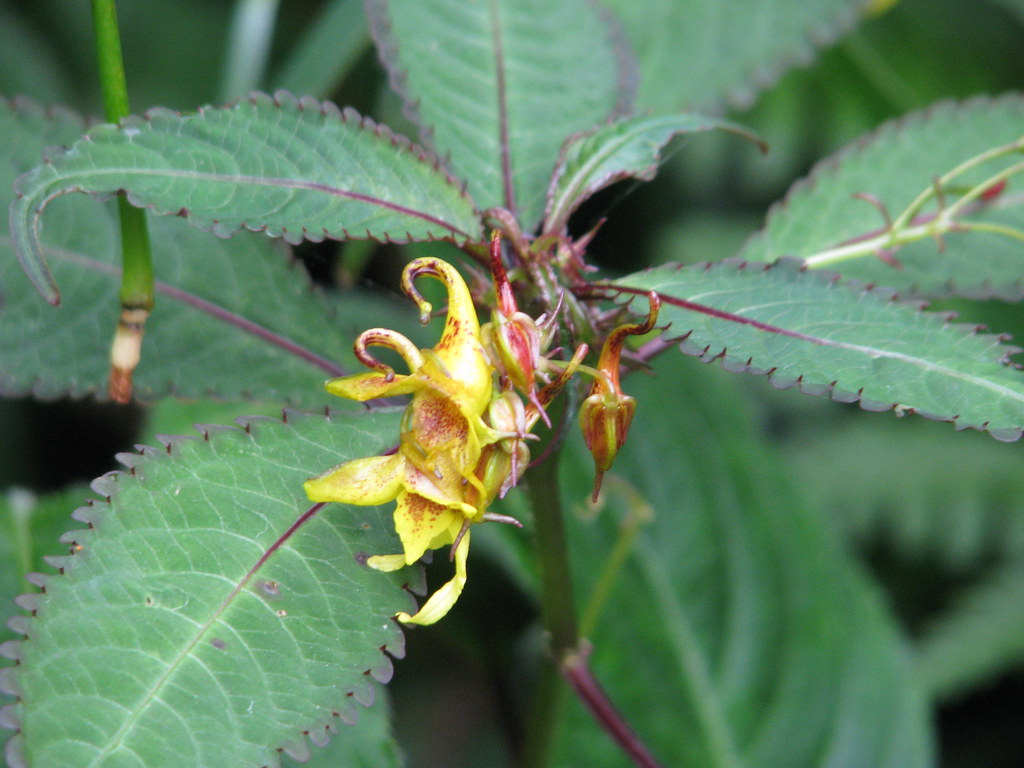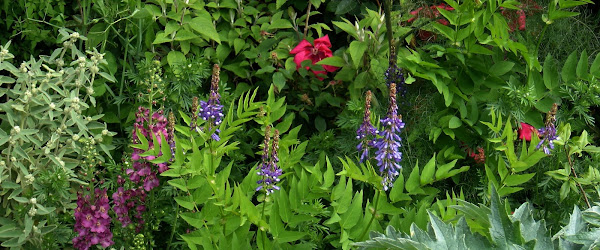It was a sad day for me because it was a place we used to go when my dad was alive and they had a nice tea shop and a very unusual selection of indoor plants (rare species Begonias for example. Evidently someone who worked there was an enthusiast.)
It was an unusual place actually in that it had a lot in common with what we know as garden centres (a lot of garden ornaments, composts and sundries and the tea shop) but it was independently owned (not part of a chain) and probably as a result of this it had a quirky character and an idiosyncratic selection of plants on sale, many of them produced on site and not too expensive. When it was bought out, the oddities disappeared, the place was 'tidied up' and the prices rose by, I'd say, about 50% (£6.99 rose to £10.99 for a shrub for example. So much for economies of scale.)
Of course, most punters won't know the difference. They go to a garden centre of a Sunday not to pick up a rare Begonia but to peruse the wax cotton jackets, drink a cappachino to a 'Celtic Chill' soundtrack, and maybe take auntie Maude an azalea for her birthday. It's a nice day out.
So why, besides the nostalgia, does it bother me so much that this take-over happened? After all, the public get what they want don't they? The owners were presumably offered a fairly hefty incentive. Probably they retired on the proceeds.
I like that film, The Devil Wears Prada. Besides seeing Anne Hathaway running around in that green dress, I especially like that bit where the Meryl Streep character explains to the Anne Hathaway character that the clothes she wears are not merely stuff (I love the way she says that - 'stuff'.) No - high street fashions are the end result of a tremendous effort involving designers and fashion houses, selecting one colour over many other almost identical ones, cutting the shape just so, presenting it on the catwalks in Paris so that it will eventually end up in the local chain store so that we can buy it.
I know nothing about that world. Haute couture is a mystery to me. I'm an ordinary clothes wearer. I buy what I can find reasonably easily in the highstreet (or at the army surplus) if it seems to fit and will do the job and I can afford it. I'm not an expert. Life's too short. You can't be an expert in everything (or many things actually). There are people out there who really love and know about clothes and I have to trust them to provide me with things that will look ok and not fall apart immediately from the vast array of clothes that are produced, or could be produced in the world.
Most people who go to a garden centre are like me in H&M. They may even consider themselves keen gardeners. They no doubt buy the odd copy of Gardener's World, watch Titchmarsh on the telly from time to time, own a copy of the RHS Encyclopedia of Garden Plants. Many may know the names of most of the plants in their garden and a few others besides. They may be members of the RHS or NT. They're ordinary gardeners and quite right too. As I say, life's too short. They can't be an expert in everything and they have to trust the garden centre staff to provide them with plants that will grow well and look good from among the vast array of plants that are grown, or could be grown all over the world.
I can hear the hollow laughter from here ('Trust the staff? Hah!') but even so, I hear you say, if people want obscure Begonias, surely they can go to an obscure begonia nursery? There are plenty of specialist nurseries about. Each to his own. Live and let live, surely?
Unfortunately not. Small specialist nurseries only rarely sell only obscure and unusual plants, and generally only if they are not totally dependent on them for an income. Go to Crug farm in North Wales, renowned for being one of the finest purveyers of rare and obscure plants probably in the world, and if you look at their list you will also find pages and pages of hardy Geraniums on offer which have always been a bit of a speciality of theirs. They're probably less dependent on them now they're known all over the world but I'm fairly certain it was the Geraniums originally that gave them the freedom to offer all the obscure stuff.
For the grower, plants can be divided up into broadly two categories - those that are easy and quick to produce and those that are not. The best garden plants can be found in both groups. Many plants that are difficult to propagate are hardy and reliable once established in the garden. Now, the keen nurseryman will be trying to produce the best garden plants, probably based on his own tastes and experience. They will want to provide the best plants for their customers in the best possible state to transplant quickly and establish easily in the customer's garden. To do this they may need to talk to the customer and provide advice, even if that means discouraging them from buying something because it may disappoint. They will of course be trying to make a living at this, and one way of doing that will be to make sure they offer a range of plants in the 'quick and easy' category (eg Crug Farm's Geraniums) as well as the more awkward stuff.
The problem then with the garden centres, and the wholesalers who supply them is that they tend to cream off the 'quick and easy' plants and ignore the ones that are not (or in a few cases they may offer them as a 'speciality' or 'plantsman's' range of fashionable items with an extravagant price tag. The whole 'architectural' plants thing is the obvious example.)
Either way, the small specialist nursery, unless they are doing it for love, will be forced out of business. Live and let die, you might say.
Will the average punter even notice the loss? Highly doubtful, but the overall result is obvious - the apparent choice and variety at the garden centre masks the actual loss of diversity overall. I see it every time I go to one of these places, but then I've lived and breathed plants for the last thirty years.
Obviously which ornamental plants you can buy for your garden is not a life and death situation, but it does make me wonder about the supposed choice available in other products that I do not know so much about, such as food or clothes, finance or, for example, medicines; as the suppliers get larger in size and fewer in number.
Surely the free market is supposed to promote choice?




